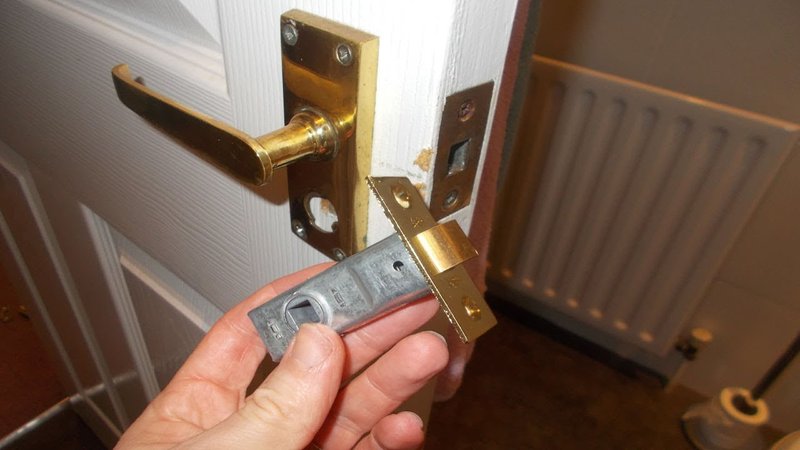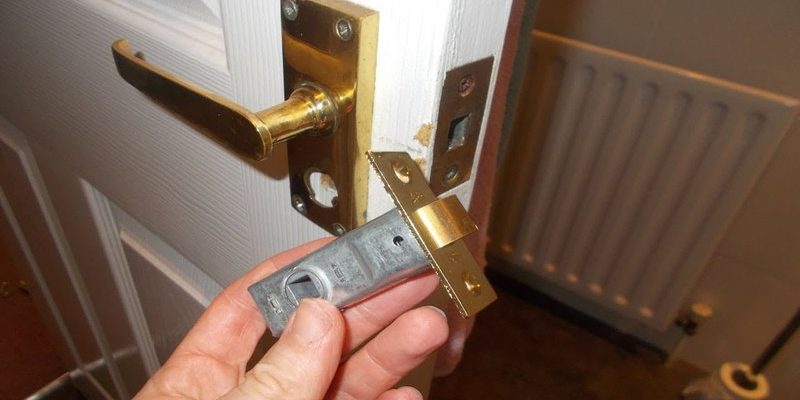
Replacing a latch bolt on an interior door might sound daunting, but it’s simpler than it seems. Much like changing a tire, it requires a few tools, a bit of patience, and maybe a YouTube video or two. Don’t worry; even if you’re not a DIY expert, this guide will walk you through each step. Let’s dig in!
Understanding Latch Bolts
A latch bolt is the part of the door hardware that keeps your door securely closed. Imagine it as the little piece that fits into the door frame when you close the door. When you turn the knob or handle, the latch bolt retracts, allowing the door to swing open. Over time, like any piece of hardware, it can wear out or get stuck due to dirt or rust.
There are different types of latch bolts, but most interior doors use a spring-loaded mechanism. This design makes it easy to operate but also vulnerable to wear and tear. If your door is giving you troubles—like sticking or not latching at all—it might be time to consider a replacement.
Gathering Your Tools
Before you start, it’s essential to have the right tools on hand. You wouldn’t want to be halfway through only to discover you’re missing something crucial. Here’s a quick list of what you’ll need:
- Phillips screwdriver
- Flathead screwdriver
- Tape measure
- Replacement latch bolt
- Drill (if needed)
- Wood glue (for minor repairs)
It’s super important to get a replacement latch bolt that fits your door. Measure the existing latch carefully before heading to the hardware store. You might be wondering if you should go for a universal latch or one specific to your door brand. While universal options exist, it’s often best to match the original for a perfect fit.
Removing the Old Latch Bolt
Now that you have your tools, it’s time to get your hands a little dirty. Start by closing the door and inspecting the latch. You’ll notice it has screws on the plate (the part you see when the door is closed). Using your Phillips screwdriver, carefully unscrew these.
Once the screws are out, you can gently pull the latch bolt mechanism out of the door. If it feels stuck, a light tap with a flathead screwdriver may help loosen it. Be cautious, though! You don’t want to damage the door. If your latch bolt has seen better days, you might be surprised at how easy it is to slide out.
Installing the New Latch Bolt
With the old latch bolt out, it’s time to install the new one. First, take a moment to compare the two. They should look similar, and the new one should fit snugly into the same space. If it doesn’t fit, you may need to adjust the door or the latch hole slightly with a chisel or drill.
Slide the new latch bolt into the hole and align it properly. Then, secure it with the screws you removed earlier. It’s a good idea to test the latch a few times before fully tightening everything down. Does it retract smoothly? Is it catching properly? This is your chance to make any necessary adjustments.
Testing the New Latch Bolt
Once everything is secured, it’s time for the moment of truth. Close the door gently and turn the handle to see if the latch engages correctly. You should hear a satisfying click! Also, try pushing on the door slightly. It should stay closed without any effort.
If you feel resistance or it doesn’t latch, don’t worry. It could be as simple as misalignment. You might need to adjust the strike plate—the metal piece on the door frame where the latch fits into. Loosen the screws on the strike plate and shift it slightly, then tighten them back up before testing again.
Maintaining Your Latch Bolt
Congratulations! You’ve successfully replaced the latch bolt on your interior door. Now, let’s talk a bit about maintenance. A well-maintained latch can last for years, so it’s worth a bit of effort.
Here are some simple steps to ensure your latch stays in good shape:
- Regularly check for dirt and debris around the latch area.
- Apply a silicone lubricant to keep the mechanism running smoothly.
- Periodically check screws to make sure they’re tight and secure.
By giving your latch bolt a little attention, you’ll prevent future issues and keep your doors functioning smoothly.
When to Call a Professional
If you encounter issues beyond just a worn latch bolt, it might be time to consider calling in a pro. If the door frame is warped, or if you’re dealing with complex lock systems, it can get tricky. A locksmith can help you reassess the situation and give you options.
You might also want a professional’s help if you’re worried about security. A well-functioning latch is crucial for keeping your home safe, and a professional can ensure everything is up to standard.
Replacing a worn latch bolt on an interior door is a straightforward task that any beginner can tackle. With the right tools and a bit of patience, you can solve a common household problem and improve your door’s functionality. Remember, taking care of your home’s hardware can save you from bigger headaches down the line. Whether you’re replacing latches, fixing squeaky hinges, or just checking up on your door locks, it’s all part of maintaining a safe and welcoming space. Happy DIY-ing!
